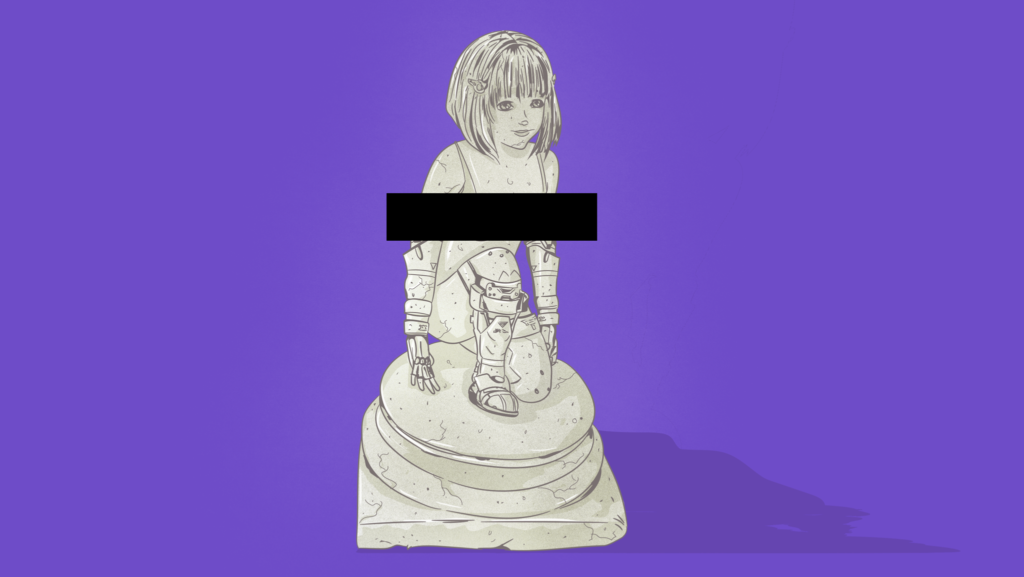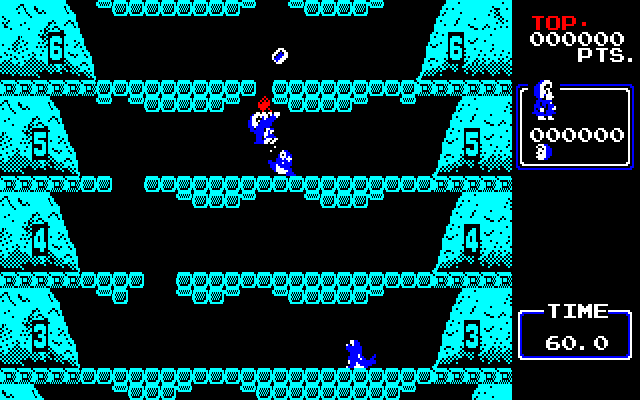Top 10 instances of video game censorship
When it comes to any form of entertainment, we will see some form of censorship. This is especially true for video games. Whether it is due to cultural differences, religion, sex, or extreme violence, many games have faced censorship. Sometimes content is altered, or is removed completely. Here is a list of some of the top instances of censorship found in video games.10) Ice Climbers

Table of Contents
When it comes to any form of entertainment, we will see some form of censorship. This is especially true for video games. Whether it is due to cultural differences, religion, sex, or extreme violence, many games have faced censorship. Sometimes content is altered, or is removed completely. Here is a list of some of the top instances of censorship found in video games.
10) Ice Climbers

Many probably know Popo and Nana as playable characters in the Super Smash Bros. series. But before they were duking it out with Mario, Link, and Samus, these little Eskimos were climbing mountains in order to recover stolen food. Along the way, they would use their wooden mallets to break ice and defend themselves from enemies. However, the enemies that they defended themselves against varied depending one what region you were from. In North America, Popo and Nana had to fight against yeti-like creatures. In Japan, however, the duo were instead clubbing seals. Nintendo of America thought that Americans would have an issue with players harming seals, and instead decided to change the enemy to something that would not be so controversial.
9) Tokyo Mirage Sessions #FE
Tokyo Mirage Sessions #FE is a combination of the Shin Megami Tensei and Fire Emblem franchises. It is a bright and poppy JRPG full of color. However, when the game made its way to North America, it was censored in a variety of ways. Censorship included altered outfits, character’s ages being raised, alternate dialogue, and certain pieces of DLC not coming west when the game released over here. When Nintendo (who published the game) had shown off the game in North America, many fans were outraged over the number of changes that had been made. Nintendo stated that the changes were made because of the “varying requirements and regulations in the many different territories Nintendo distributes its products,” but that did not help to ease the many fans who saw such censorship in a negative light.
8) No More Heroes
Most people like to think that Nintendo is a very family friendly developer. However, that was not the case when it came to No More Heroes. The Wii title featured plenty of blood and body parts as protagonist Travis Touchdown cut his enemies apart with his beam katana. At least, that is what those in North America saw. When the game was released in Europe, Japan, and Australia, the huge amounts of blood and dismembered limbs were all removed. Instead, enemies would disintegrate into ash. The game’s sequel would release uncensored, while Europe would receive an uncensored version of No More Heroes when it was released on the PlayStation 3.
7) Earthbound
Earthbound (known as Mother 2 in Japan) was hit with a number of different types of censorship when it was released in North America. At the time that the game was released, instances of domestic violence or abuse were not permitted to be in video games, leading to a scene where a father spanks his children being changed to him just punishing them. The “HH” on the blue hoods of the Insane Cultists was replaced by a white cotton ball that was meant to resemble the hat worn by Santa Claus in order to eliminate any similarities with the Klu Klux Klan. A number of changes were also made so Nintendo could avoid being sued. This includes the removal of the red cross symbol on hospitals due to the symbol being copyrighted by the American Red Cross. The Tonzura Brothers were renamed The Runaway Five and had the two singers’ outfits changed to eliminate any resemblance to the Blues Brothers.
6) Xenoblade Chronicles
Xenoblade Chronicles X was another JRPG that was censored due to characters being over sexualized. One of the characters had her outfit altered in order to make it less risque, and had her age raised from 13 to 15. Nintendo also removed the breast slider in the character customization screen that allowed players to alter the size of a female character’s bust. Similar to the reactions that players had to the censorship of Tokyo Mirage Sessions, fans were not happy that the changes were made. When Nintendo finally responded to the complaints, the publisher stated that the changes were not instances of censorship, but were a part of the game’s localization, further upsetting fans who wanted to play the game as it was created to be.
5) Silent Hill
The Silent Hill series is known for being dark and disturbing, especially when it comes to the monsters found in the games. While many of the monsters are twisted and grotesque, one monster was deemed too much for some regions of the world. In the North American version of the original Silent Hill there are monsters called Grey Children. They are small, child-like creatures that wield knives. In the European and Japanese version of the game, however, these monsters were removed and replaced with a different type of enemy. The reasoning was that the Grey Children were deemed too similar to children whom you were able to kill. Despite being removed from most of the game in these regions, the Grey Children’s Stalker form can still be found.
4) Pokemon
Many consider the Pokemon franchise to be aimed mainly towards a younger audience. Despite this, the franchise has faced its share of censorship. Since the series’ Game Boy days, a number of character sprites have been altered to be less risque when the games would come to North America. Women’s skirts would be lengthened, men’s speedos would become trunks, and winks would be deleted. One Pokemon had its sprite changed as the original’s pose looked too much like the Nazi salute. One of the biggest controversies, however, was the appearance of the Pokemon Jynx, who was thought to be portraying a negative stereotype of African Americans. The character was altered not just in the video games, but the anime and card games as well. The solution? The Pokemon was changed from black to purple.
3) Bionic Commando
There were a number of differences between the American and Japanese versions of Bionic Commando. The game was known as Top Secret: Hitler’s Revival in Japan, and featured a group of neo-Nazis who were trying to revive Adolf Hitler. When the game came to the States, however, most references to Nazism were changed. Swastikas were changed to eagles, and the Nazis were renamed “the Badds.” Hitler himself was renamed “Master D.” Despite most references to Nazis being changed, Master D’s appearance was not changed at all, and it was obvious that players were trying to stop Hitler. His graphic and bloody death scene was also kept intact, with his face exploding in rare NES gore.
2) Manhunt 2
At first, this psychological horror title was denied certification before being given the Adults Only rating with some countries outright refusing to rate it due to the game’s excessive amount of brutal violence. The AO rating meant that many retailers would not stock the game, with both Sony and Nintendo refusing to allow the game to release on their consoles with this rating. This forced developer Rockstar to censor the game, and to get it down to an M rating. This version of the game applied a filter to the visuals whenever an execution occurred, though this was not enough for the Wii version, as additional scenes were removed for that version of the game.
1) Mortal Kombat
Mortal Kombat was perhaps the most controversial game of its time, so much so that it led to the creation of the Entertainment Software Rating Board. The game was known for its excessive amount of blood and its brutal Fatalities. Understandably, when the game made the leap from arcade to home, it had some censorship issues. The game came to both the SNES and Sega Genesis, and was handled differently on both consoles. The Genesis version initially has the blood and gore removed, but included a code that players could enter to unlock it. The SNES version of the game completely censored the content, downplaying the Fatalities and turning the blood into sweat. In the end, the Genesis version sold better, due to having the then controversial content.
